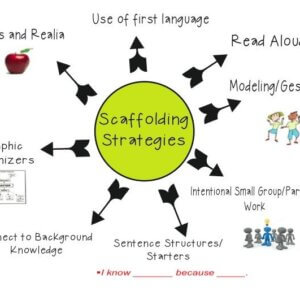Scaffolding in education is a teaching method that aligns with Vygotsky’s notion of the zone of proximal development. It involves providing tailored support to students based on their current level of expertise and gradually withdrawing that support as they become more proficient. The aim is to foster a student’s ability to achieve positive learning outcomes independently.
Instructional scaffolding is strategically executed by setting clear learning objectives and offering a level of guidance that is adjusted to the academic level of the student. Teachers might employ scaffolding techniques in both traditional and online learning environments to bolster successful learning. These techniques can include breaking down tasks into smaller, more manageable parts, using leading questions, or demonstrating tasks to guide students through the learning experiences.
Conceptual scaffolding is vital, particularly in problem-based and inquiry learning, where students engage in discovery learning. It helps students to navigate complex concepts by connecting new information with existing knowledge, considering various learning styles in the process. This key concept ensures that the learning experiences are meaningful and that the transition towards independent learning is smooth and effective.
An expert in educational psychology, Jerome Bruner, once remarked, “We begin with the hypothesis that any subject can be taught effectively in some intellectually honest form to any child at any stage of development.” This underscores the benefits of scaffolding—teachers can adjust the academic content to suit the learner’s cognitive abilities, leading to successful learning outcomes.
As the teacher’s level of expertise and understanding of the students’ needs shape the level of guidance provided, scaffolding remains an adaptable approach. Online courses, with their diverse and broad reach, stand to benefit significantly from this approach, as it allows for personalized learning paths that can be adjusted in real-time.
In essence, scaffolding is about empowering students to build upon their existing knowledge base and to encourage self-reliance in the learning process. It is a testament to the belief that with the right support, students can achieve higher levels of understanding and skill than they would independently.









